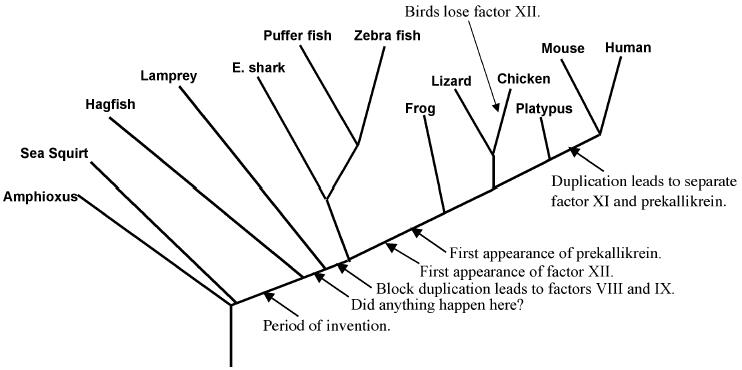Step-by-Step Evolution of Vertebrate Blood Coagulation R.F. Doolittle Figure 6. Time-line phylogeny for appearance (and disappearance) of various clotting factors during the course of vertebrate evolution. doi 10.1101/sqb.2009.74.001 Cold Spring Harb Symp Quant Biol 2009. 74: 35-40 Copyright © 2009, Cold Spring Harbor Laboratory Press
"Because fibrinogen, the mainstay of the clot, has never been found in any protochordate by any method, we must conclude that the invention of thrombin-catalyzed fibrin formation took place in the ~50–100-million-year window between the appearance of protochordates and the jawless fish." In other words, there was a period of invention several million years ago. Any other explanation would be unscientific. "Genomic data for hagfish are sparse, however, and for the moment, our study of clotting factors in this group is mostly limited to the lamprey. Even so, the system in these creatures is decidedly simpler than in mammals and serves as an illustration of how such a system can become more complex." In other words, a simple system compared to a more complex system illustrates how one can evolve into the other, which in turn proves that it did because any other explanation would be unscientific. Q. E. D. See also The evolutionary origin of complex features, Nature 423, 139-144 (8 May 2003): "A long-standing challenge to evolutionary theory has been whether it can explain the origin of complex organismal features." (The reason why you won't find the challenge in the scientific litterature is that any challenge to the theory by definition is unscientific. Challenges thus don't appear until they are refuted. This proves that there are no problems with the theory of evolution and that the scientific consensus concerning the theory is founded on science, not bias.) |

